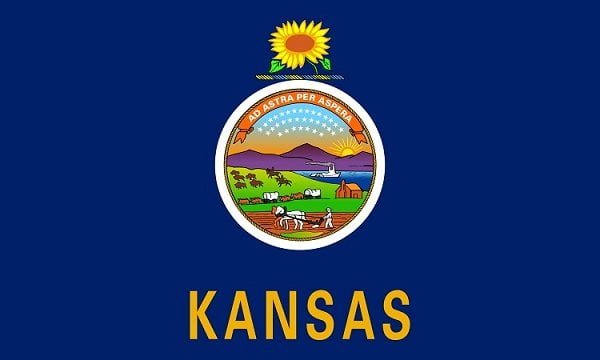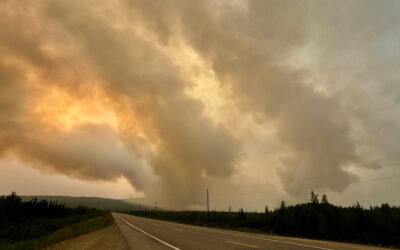Smoke from Kansas reaching as far north as South Dakota

By ROXANA HEGEMAN Associated Press
BELLE PLAINE, Kan. (AP) — Kansas ranchers eager to prepare their land for cattle grazing have mostly brushed off the plea from state health officials to voluntarily cut back this spring’s prairie burning to reduce air pollution during the coronavirus pandemic.
With the potential of the pandemic overwhelming the state’s medical facilities, the Kansas Department of Health and Environment on March 26 encouraged land owners and managers to reduce burned acres this spring in an effort to mitigate respiratory concerns connected to breathing the smoke.
Officials warned that individuals with respiratory issues, including COVID-19, as well as those with preexisting heart and lung diseases, children and elderly may experience worse symptoms due to the smoke from fires.
But air quality monitors this past week have picked up “significantly high readings” downwind from Kansas in the Lincoln and Omaha areas of Nebraska, with smoke from Kansas reaching as far north as South Dakota, said Rick Brunetti, director of the Bureau of Air at at the Kansas Department of Health and Environment.
“We are seeing very little, if any, reduction in the amount of burning that is taking place in Kansas at the present time, Brunetti said.
The reasons vary, experts say. Some landowners may already have had contracts in place with the professionals hired to do the burning. Others have agreements in place to fatten cattle on those acres this summer. And still others do so because that is the way they have always done it and are more comfortable with burning in the spring.
“There is a whole infrastructure that is geared up to do this, so it doesn’t surprise me,” said Craig Volland, chairman of the air quality committee of the Kansas chapter of the Sierra Club.
Dr. Lee Norman, KDHE Secretary, said on Wednesday that he does not “have the inclination” to recommend now an outright ban on all rangeland burning because pollution levels aren’t consistently above the thresholds set by the federal government.
“I think that would be considered if we had continued high number of coronavirus cases and influx into hospitals and that kind of thing,” Norman said. “But we actually are not seeing an unusual amount of clinical activity now in those facilities.
Air quality standards were exceeded six times between April 3 and 9 in Kansas, according to the latest Flint Hills Prescribed Fire Update. Pollution levels were also exceeded Saturday in Lincoln, Nebraska, as the smoke from Kansas drifted across state lines.
A day earlier, the Lincoln-Lancaster County Health Department in Nebraska issued a health advisory to the general public saying smoke in the air was expected to reach levels that are unhealthy for everyone. They especially pose an elevated risk to children, older adults and those with asthma, lung disease, other respiratory conditions or heart disease.
About 2.6 million acres (1.1 million hectares) were burned in Kansas last year, compared to 1.5 million acres (about 607,000 hectares) in 2018 and 2.4 million acres (about 971,000 hectares) in 2017, according to satellite data by the National Oceanic and Atmospheric Administration.
For decades, landowners have burned their fields each spring as a way to control invasive plant species and increase the lushness of pastures where they will graze beef cattle in the coming months.
That is especially the case in the Flint Hills, where the rock is so close to the surface and the terrain so hilly that tilling is impractical. Encompassing several hundred miles in eastern Kansas, the Flint Hills are among the last remaining tallgrass prairie ecosystems in the world.
While landowners in other parts of Kansas and states around it also burn rangeland, Brunetti said, the fires are of “significantly greater quantity” in the Flint Hills.
Flint Hills rancher Pete Ferrell said their protocol does not include yearly burning. They burn less consistently than other ranchers because they use high density stocking of beef cattle and a goat herd to control invasive species. He said they had already decided not to burn this year when health officials made their request.
“So no, that was not a factor for us, although I have shared that concern with neighbors, with associates who do burn,” Ferrell said.
It is not possible yet to say definitively whether smoke impacts have changed in Nebraska because of the recommendation by Kansas health officials to not burn, said Amanda Woita, spokeswoman for the Nebraska Department of Environment and Energy. Nebraska would not have “a full picture” until after the burn season ends, she said.
KDHE spokeswoman Kristi Zears said Kansas health department officials are encouraging landowners in the Flint Hills to use the smoke model tool to alleviate impacts to downwind communities.
“This is especially important with the current coronavirus pandemic affecting fellow Kansans and surrounding states,” Zears said.
All contents © copyright 2020 The Associated Press. All rights reserved.




